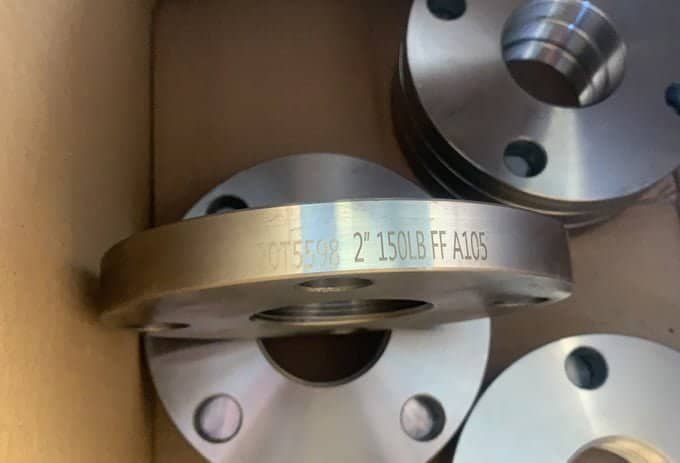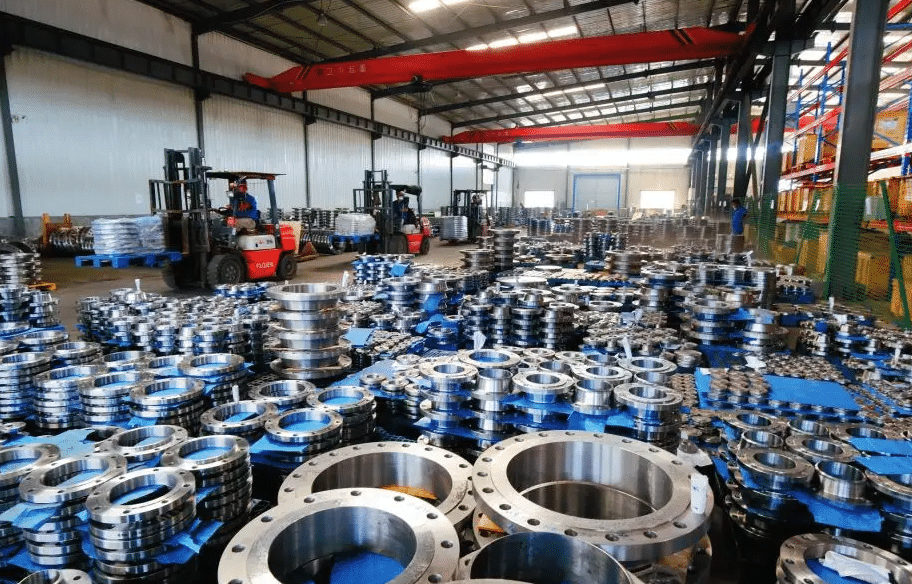Where do NPS or DN stand for?
In the industrial field, accurate selection of pipe sizes is a crucial factor in ensuring smooth operations. Understanding and comprehending the standard systems for pipe sizes are essential for selecting compatible pipe fittings. This guide will delve into two commonly used standard systems for pipe sizes: NPS (Nominal Pipe Size) and DN (Diameter Nominal), helping you better understand their usage and conversion relationships. Additionally, we will introduce Hebei Yanhao Pipeline Equipment Co., Ltd. as a professional manufacturer providing reliable NPS and DN-related products and solutions. Our objective is to showcase our professionalism, reputation, and commitment through this guide, and offer high-quality products and services for your pipe projects. Please continue reading to gain an in-depth understanding of the significance of NPS and DN, as well as why you should choose Yanhao as your partner.

Introduction to NPS and DN
NPS and DN Introduction:
- NPS stands for Nominal Pipe Size, while DN stands for Diameter Nominal. Both NPS and DN are standardized systems used to identify pipe sizes in various industries.
- NPS is primarily used in the United States and Canada, while DN is predominantly used in Europe and other metric-based regions. However, both systems serve the same purpose of specifying pipe sizes.
- NPS is based on the nominal inside diameter (ID) of the pipe, while DN is based on the nominal outside diameter (OD) of the pipe. The size designation in NPS represents the approximate ID in inches, while the size designation in DN represents the approximate OD in millimeters.
- NPS sizes are given in fractions or decimals, such as 1/2″, 3/4″, 1″, 2″, etc. DN sizes are given in whole numbers, such as DN15, DN20, DN25, DN50, etc.
Importance of NPS and DN in the Pipeline Industry:
- NPS and DN play a crucial role in specifying pipe sizes accurately and ensuring compatibility within a pipeline system.
- Proper pipe sizing is essential to maintain efficient and reliable fluid flow, whether it is for liquids or gases. Choosing the correct NPS or DN size ensures that the pipe and its associated components, such as fittings and valves, are properly matched and can be easily connected.
- The use of standardized systems like NPS and DN allows for seamless communication and interaction between manufacturers, suppliers, contractors, and end-users, ensuring the interchangeability and compatibility of components from different sources.
- Understanding NPS and DN is important for engineers, designers, and project managers involved in the selection and installation of pipes. It helps them make informed decisions regarding pipe sizes based on the flow rate, pressure requirements, and other factors specific to the application. Additionally, it ensures compliance with industry standards and regulations.
- Manufacturers, such as Hebei Yanhao Pipeline Equipment Co., Ltd., provide a wide range of products and solutions designed to meet both NPS and DN requirements, catering to the needs of customers worldwide. Choosing a reliable manufacturer like Yanhao ensures access to high-quality products that adhere to industry standards and meet specific project demands.

Understanding NPS (Nominal Pipe Size):
- NPS, or Nominal Pipe Size, is a standardized system used globally to identify and categorize pipe sizes. It provides a universally accepted way of specifying the inner diameter of a pipe, although it does not directly correspond to the actual physical dimensions of the pipe.
- The relevance and significance of NPS can be observed across various industries, including oil and gas, chemical, and water treatment. NPS allows for easy identification and selection of pipes based on their intended application and flow requirements.
- In the United States, the American National Standards Institute (ANSI) and the American Society of Mechanical Engineers (ASME) developed the ANSI/ASME B36.10 standard, which provides guidelines for NPS. This standard specifies the dimensions, tolerances, and materials for various NPS sizes, ensuring consistency and compatibility in the American market.
- In Europe, the British-European standard BS EN 10255 outlines the requirements for NPS. This standard provides specifications for non-alloy steel tubes suitable for both hot and cold water conveyance systems, ensuring compliance and compatibility within the European market.
- ANSI/ASME B36.10 and BS EN 10255 standards play a crucial role in ensuring uniformity and compatibility in pipe sizing. These standards allow manufacturers, suppliers, and end-users to seamlessly connect pipes, fittings, and valves from different sources, facilitating efficient and safe operations in pipeline systems.
- It is important for engineers, contractors, and project managers to have a solid understanding of NPS and its associated standards to make informed decisions about pipe selection, ensuring optimal performance and compatibility within their specific applications.
Understanding DN (Diameter Nominal):
DN, or Diameter Nominal, is a standardized system used globally to identify and categorize pipe sizes. It is particularly prevalent in Europe and many other regions that follow metric-based measurements. DN provides a standardized and consistent method for specifying the outside diameter (OD) of pipes.
DN is widely applied in various industries, including oil and gas, chemical, water treatment, and construction. It allows for seamless communication and compatibility between manufacturers, suppliers, and end-users, ensuring the easy interchangeability and connectivity of pipes, fittings, and valves.
While DN is primarily used in regions that adhere to the metric system, it can be correlated with the American NPS (Nominal Pipe Size) system to ensure compatibility. For example, DN15 is approximately equal to NPS 1/2″, DN20 corresponds to NPS 3/4″, DN25 aligns with NPS 1″, and so on.
This correlation between DN and NPS enables engineers, designers, and project managers to select pipes and components based on their specific requirements and standards, regardless of whether they follow the metric or imperial measurement system. It promotes efficient and reliable fluid flow while ensuring compliance with industry regulations and specifications.
In addition to its compatibility with NPS, DN allows for easy conversion to millimeters, providing precise measurements for pipe sizing. For instance, DN15 corresponds to an approximate outside diameter of 21.3 mm, DN20 has an OD of around 26.9 mm, and DN25 has an OD of about 33.7 mm.
Understanding DN is crucial for those involved in the design, installation, and maintenance of piping systems. It helps ensure the proper selection and compatibility of pipes and components, enabling efficient flow, minimizing leaks, and preventing performance issues. Manufacturers like Hebei Yanhao Pipeline Equipment Co., Ltd., provide a wide range of products that meet DN specifications and deliver high-quality solutions to customers globally.

Interconversion between NPS and DN:
Here is the conversion chart between NPS and DN sizes in a table format:
| NPS | DN (mm) | NPS | DN (mm) |
| 1/8″ | 6 | 4″ | 100 |
| 1/4″ | 8 | 5″ | 125 |
| 3/8″ | 10 | 6″ | 150 |
| 1/2″ | 15 | 8″ | 200 |
| 3/4″ | 20 | 10″ | 250 |
| 1″ | 25 | 12″ | 300 |
| 1-1/4″ | 32 | 14″ | 350 |
| 1-1/2″ | 40 | 16″ | 400 |
| 2″ | 50 | 18″ | 450 |
| 2-1/2″ | 65 | 20″ | 500 |
| 3″ | 80 | 24″ | 600 |
Please note that the conversion chart and illustrations provided here are general, and exact conversions can vary depending on standards and specifications. It’s always recommended to refer to specific industry standards and guidelines for accurate NPS and DN conversions.
NPS (Nominal Pipe Size) and DN (Diameter Nominal) can be converted into each other using conversion tables or formulas. The conversion is approximate due to the differences between the American NPS system and the metric-based DN system. However, these conversions allow for compatibility and communication between different regions and industries in the global market.
Understanding the relationship between NPS and DN is crucial in the global market where companies and industries interact globally. Although NPS is primarily used in North America and DN is more prevalent in Europe and metric-based countries, the ability to convert between the two helps facilitate communication and standardization across different regions.
In some cases, industries may have a preference for one system over the other based on historical usage and local standards. For example, North American industries often prefer NPS due to its long-standing usage, while European and metric-based industries lean towards DN. However, global projects and collaborations often require harmonization and coordination between these preferences, necessitating the understanding and ability to convert between NPS and DN.
Further, industry-specific standards and regulations may dictate the use of a particular system. For instance, oil and gas industries generally use NPS in North America but may adhere to DN standards when operating globally. The ability to convert between these systems allows companies to navigate and comply with different regional requirements.
It’s worth noting that while NPS and DN are widely used, there can be slight variations in the dimensions and tolerances between different manufacturers and standards organizations. Therefore, it is essential to ensure alignment with specific industry standards and refer to reliable conversion tables or resources when converting between NPS and DN.

Conclusion
In conclusion, understanding the relationship between NPS and DN is vital in the global pipeline equipment market. The ability to convert between these two systems allows for seamless communication and compatibility between different regions, industries, and standards.
When it comes to sourcing reliable NPS and DN-related products and services, Hebei Yanhao Pipeline Equipment Co., Ltd. is a trusted and dependable partner. With our expertise and experience in the industry, we ensure high-quality products that meet and exceed industry standards.
If you have any further questions, or inquiries, or require more information about NPS and DN conversion, we invite you to connect with Hebei Yanhao Pipeline Equipment Co., Ltd. Our team of professionals is readily available to assist you.
Contact Information:
- Website: www.carbonsteelflanges.com
- Phone: +86 15303178205 (same as WeChat)
- Email: flanges.yh@gmail.com
Trust Hebei Yanhao Pipeline Equipment Co., Ltd. for all your NPS and DN-related needs and experience excellent products and services.
Author: Lewis Liu
Hello, my name is Lewis Liu, and I’m a professional sales engineer with over a decade of expertise in the flange fittings sector.
I am quite informed about flange selection, installation, and maintenance. I am passionate about providing customers with the greatest solutions for keeping their pipeline systems running smoothly, safely, and dependably.
If you have any queries or concerns concerning flange fittings for your pipelines, whether they are about selection, material choice, specification requirements, or anything else, please contact me at any time. I am dedicated to providing expert advice and assistance to help you make educated decisions and reach your objectives.

